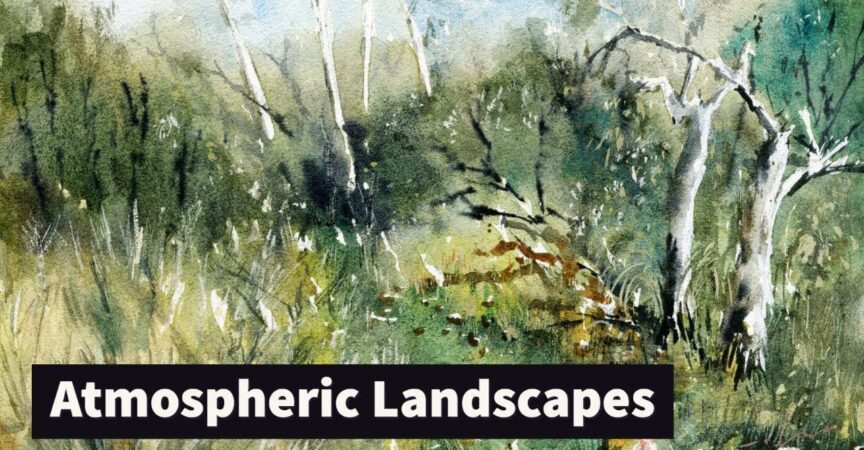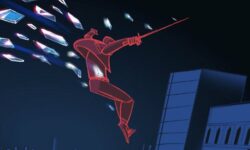Atmospheric Natural Landscapes in Watercolor
Release date:2022, September 23
Author:Watercolour Mentor
Skill level:Beginner
Language:English
Exercise files:Yes
What you’ll learn
- How to paint a beautiful, atmospheric natural landscape
- How to draw and compose your painting – this lesson is placed at the beginning of the demonstration to show you how I sketch in basic details
- I will show you how to place the horizon line, and how to quickly and accurately sketch in the reference photo
- I will also talk about how I use my sketch to plan out the steps of my watercolor painting afterwards
- How to use complementary colours to create vibrancy and interest in your watercolour paintings
- How to paint skies, water, trees and shrubs in soft and loose manner
- How to use wet-in-wet and wet-in-dry techniques
- Where and when to wet your watercolor paper to obtain particular results such as the appearance of soft clouds
- When to paint in more rigid and accurate shapes once the paper has dried
- The importance of timing in watercolors and when to use different brushes
Requirements
No prerequisites required.
Discription
Atmospheric Natural Landscapes in Watercolor
Welcome to Atmospheric Natural Landscapes in Watercolor. We all want to paint a beautiful atmospheric landscape. Often we have that perfect image of our completed painting in our heads. But how do we get there? It’s tricky when you don’t know how and where to start.
Put simply, the answer is understanding the relationship between timing and mixing paint on wet paper. If you’re not careful, all the colours will run together and make a mess. I’m going to help you build your confidence and skills so that you can paint any landscape with ease.
In this class, I’m going to show you my two-step process of painting an atmospheric landscape. I’ll show you how to sketch a quick drawing with a pencil. Then we’ll begin painting by focusing mainly on wet-in-wet techniques. To paint with this technique, you need to slowly add paint to an already wet area. This is crucial in creating that mesmerizing, atmospheric look.
We’ll also go through how to use wet-on-dry techniques in the second wash to bring out fine details and sharper contrasts.
So follow along with me as I guide you through our journey of creating light, softness and atmosphere.
In this class, we’ll be covering:
- How to paint a beautiful, atmospheric natural landscape.
- How to draw and compose your painting – this lesson is placed at the beginning of the demonstration to show you how I sketch in basic details. I will show you how to place the horizon line, and how to quickly and accurately sketch in the reference photo. I will also talk about how I use my sketch to plan out the steps of my watercolour painting afterwards.
- How to use complementary colours to create vibrancy and interest in your watercolour paintings.
- How to paint skies, water, trees and shrubs in a soft and loose manner.
- How to use wet-in-wet and wet-in-dry techniques.
Where and when to wet your watercolour paper to obtain particular results such as the appearance of soft clouds, and when to paint in more rigid and accurate shapes once the paper has dried.
The importance of timing in watercolours and when to use different brushes.
Assignment:
Your class project is to draw and paint your own atmospheric natural landscape! This can be the scene featured in this class or based on one of your own photographs or scenes you have observed outside.
You can also refer to the scanned drawing/painting templates attached below which will allow you to trace the drawings if you choose to do so. I recommend drawing each scene freehand. Drawing is an important step in improving your painting skills. This provides you with an opportunity to compose and plan your painting. Once you’ve finished the drawing, use the watercolour steps and processes included in the class demonstrations to complete your painting.
Materials:
Use any permanent black ink pens, watercolour paper, and brushes you have available. I recommend:
- Pencil
- Artist-grade watercolour paints (red, blue, yellow, white gouache, neutral tint)
- 100% cotton watercolour paper or sketchbook
- Watercolour Brushes – mop brush and a variety of round brushes for detailing.
Getting Started:
Review the class demonstration videos first. You can also download the tracing templates to transfer over your drawing if you wish.
Looking to sketch and paint another scene? Research some free reference photo websites, pick one of your own reference photos, or simply find an outdoor location where you can sit and paint. Using the steps and processes included in this class, create your own unique urban sketch.
Sharing Your Work:
Share your final illustration and progress shots with the class by uploading them to the “Q&A or Discussions” section on Udemy. If you have any questions or need more tips, please let me know. I’m happy to help.
Who is Course for?
- Beginner students in drawing
- Beginner students learning watercolour painting
- Beginner students learning natural landscape painting
- Beginner students learning to paint more loosely





 Channel
Channel





